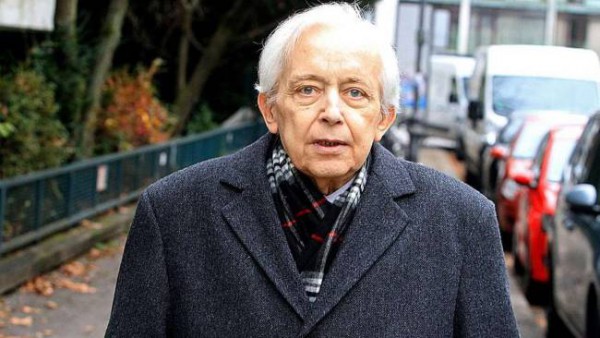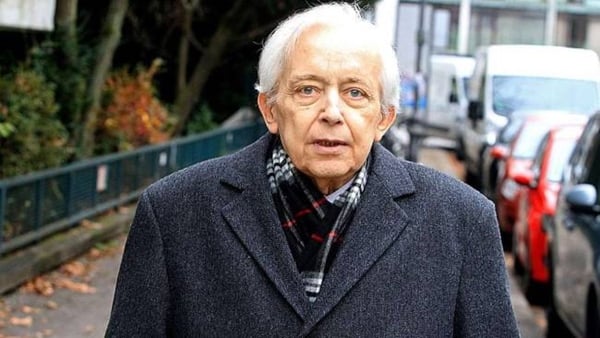Law & Politics
Kunstmuseum Bern Accepts 1,300 Artwork Nazi-Era Gurlitt Collection Amidst Legal Battles
We have the full details of the announcement from Berlin.

We have the full details of the announcement from Berlin.

Alexander Forbes


Cornelius Gurlitt, who died at 81 in May
Photo: Markus Hannich.
At a joint press conference in Berlin on Monday, the Kunstmuseum Bern and the German government announced that the Swiss museum will accept the trove of artworks bequeathed to it by the late collector Cornelius Gurlitt. Many among the nearly 1,300 works of art—which include pieces by Henri Matisse, Max Liebermann, Otto Dix, and Marc Chagall—are suspected of having been looted by the Nazis. Kunstmuseum Bern president Christoph Schaeublin made assurances that his institution would make every effort to return those works to their rightful heirs, when announcing his board’s decision.
According to the agreement, all of the works will remain in Germany until questions surrounding their provenance can be cleared up. The task force has said that the process will now stretch until 2015, possibly beyond (see “Gurlitt Taskforce Will Miss Restitution Deadline“). Schaeublin noted that this fulfills the agreement that was reached between German authorities and Gurlitt before his death, which provided for full research in the provenance of works in the collection and the return of those found to have been looted by the Nazi regime. He also confirmed that a full list of works included in the collection would be published as soon as Tuesday, a move which has been requested since the collection’s discovery was made public and is expected to assist potential heirs in locating their works.
The German government will also pay for all legal costs associated with future legal claims against the museum with regard to the Gurlitt collection. Earlier this month, Jewish World Congress president Ronald Lauder cautioned that the Kunstmuseum Bern would be opening itself up to an “avalanche” of lawsuits if the institution was to accept the collection, speculating that numerous heirs would subsequently come forward and attempt to restitute works from Gurlitt’s former holdings (see “Ronald Lauder Warns of Lawsuit “Avalanche” over Gurlitt Collection“). He warned that the Kunstmuseum Bern “would become a museum of stolen art” by accepting the works.
Discovered in 2012
Just over one year ago, the world learned of the monumental trove of Nazi looted art found by tax authorities in Cornelius Gurlitt’s Munich apartment and later at a residence in Salzburg. The hoard was discovered in 2012, following suspicions that Gurlitt was evading taxes. Works suspected to have been looted by the Nazis have since been placed on the central register for all artworks suspected of having been stolen, Lost Art. Gurlitt died on May 6th of this year and left a will, which bequeathed the entire collection to the Swiss museum (see “Gurlitt Bequeathed Collection to Museum of Fine Arts Bern“).

The Kunstmuseum Bern will announce its decision regarding the Gurlitt collection on November 26
Photo: Andreas Praefcke via Wikimedia Commons
Representatives of heirs who spoke to artnet News said that the restitution process was hobbled by the bequest despite conclusions by the German task force that the works—some of the collection’s most prominent—should be returned to their rightful heirs.
Legal representatives for 88-year-old David Toren, who escaped Nazi Germany at the age of 14, expressed their approval of the decision to artnet News, ahead of its official announcement. “It’s certainly good news for my client,” said Toren’s attorney August Matteis, “because this will most likely end the log jam that has kept the painting out of Mr. Toren’s hands up until now.” The German task force determined that Toren was the rightful heir of Max Liebermann’s Two Riders on the Beach (1901) in August (see “Gurlitt Task Force Sides with Nazi Victim“). The painting had been stolen from the Breslau villa of Toren’s great uncle, David Friedman.
Despite that verdict, little headway had apparently been made to return the painting in the several months since the task force’s decision. Now, according to Matteis, “There’s absolutely no reason for any further delay […] They should have given [the painting] back a lot sooner, from our perspective, obviously. But now there really are no further obstacles in the way.”
Matisse’s Sitting Woman Restitution
Speaking to artnet News directly after Monday’s announcement, Art Recovery International founder Christopher Marinello, who represents the family of lauded art dealer Paul Rosenberg, said “We are extremely grateful to the museum for taking on this responsibility, accepting the bequest and pledging their adherence to Washington Principles.” He noted that there are still several steps ahead before his clients would receive Matisse’s Sitting Woman, but added “The lawyer for the museum and I have been in contact,” and had already begun the paperwork necessary to complete a successful restitution. Marinello believes it is “only a matter of time” before an official date for that to occur can be set.
The museum’s decision to accept the collection comes just three days after Gurlitt’s cousin, Uta Werner, is said to have filed papers in a Munich court contesting the validity of the art collector’s will and thus the ability for the Kunstmuseum to accept his bequest. However, it appears that German authorities do not expect the last minute legal action to hold water.
The legal challenge would place Werner and several other relatives in charge of the collection. It follows the leak of results from a psychological assessment of Gurlitt, shortly before his death, that was ordered by Werner and fellow cousin, Dietrich Gurlitt. The assessment concluded that Gurlitt “suffered from mild dementia, a schizophrenic personality disorder, and a delusional disorder,” at the time of the will’s writing and thus was potentially unfit to make the bequest (see “Gurlitt Was Mentally Unfit to Write Will, Cousins Claim“). According to the AP, the cousins’ challenge of the will would have to be concluded before the collection would be able to depart for Switzerland.
Regardless of that outcome, Art Recovery’s Marinello believes that the works will be returned to their rightful heirs. “We have been contacted by the representative of Gurlitt’s heirs,” including those who filed the claim on Friday, “and their statements are that they will return works that have been looted.” He does, however, note that such a process would have likely been more lengthy than it will with the Kunstmuseum Bern, assuming all goes as announced on Monday.